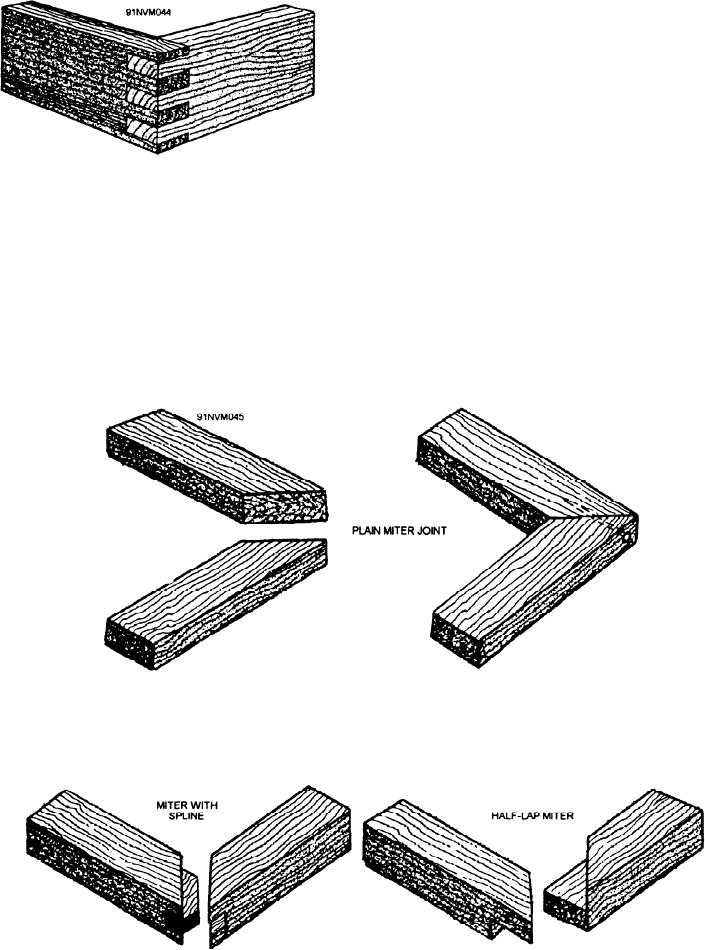squaring a small board to dimensions by hand
should be the first lesson in woodworking. The six
major steps in the process are shown in figure 3-22.
Practice them until you learn to make a smooth,
square board with minimum planing.
Instruments used for laying out joints are the
combination square, the T-bevel, the marking gauge,
and a bench knife for scoring lines. For hand
cutting joints, use the backsaw, dovetail saw, coping
saw, and various chisels and planes.
You can cut all joints mentioned in this chapter
Figure 3-18.--Box corner joint.
by hand or machine. Whatever the method you use
and whatever the type of joint, always remember the
Cutting accurate joints requires square and true
following rule: To ensure a tight joint, always cut
stock. To square and true stock, you use a jointer
on the waste side of the line, never on the line itself.
for trueing the edges and a surface planer to get
Cutting a groove on the waste side of the line with
uniform thickness. Use a table or radial saw for
a knife or chisel will help a backsaw get a smooth
squaring the ends and cutting stock to the desired
start.
length. Often, you will have to perform these
operations by hand.
Therefore, planing and
Figure 3-19.--Miter joints.
3-17






